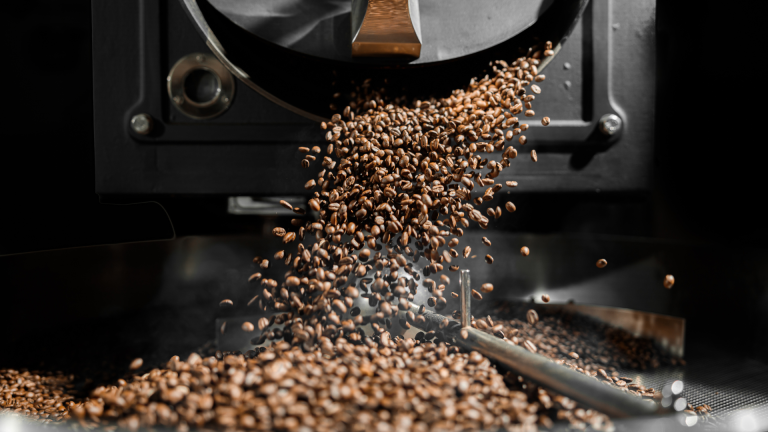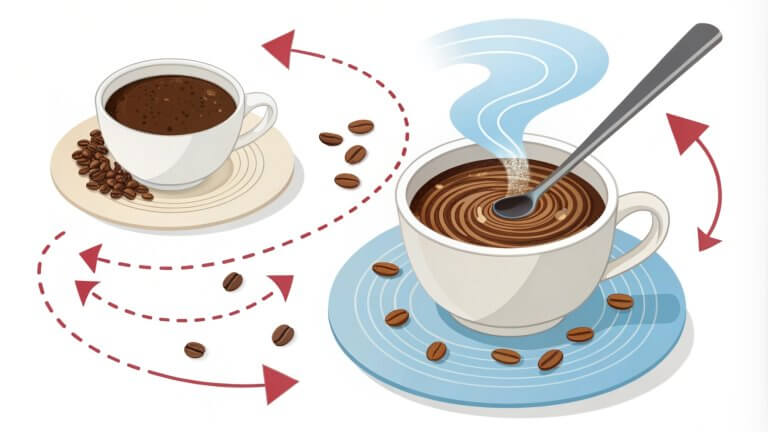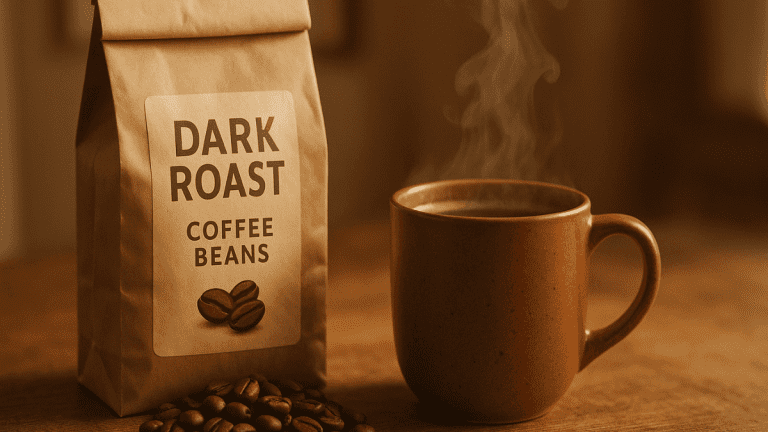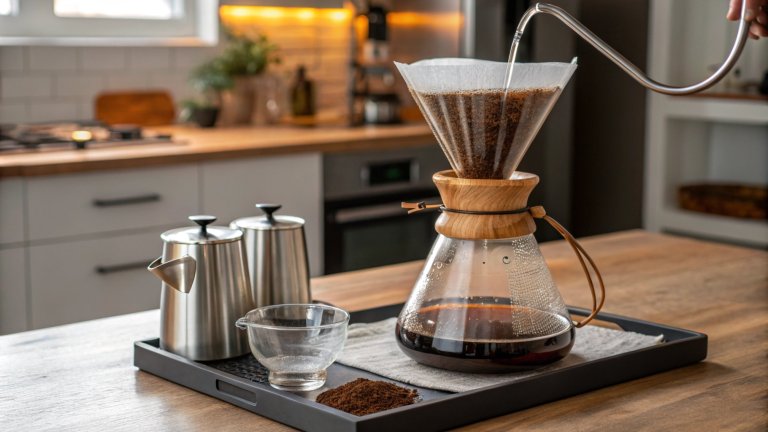
Are you tired of the same old sugar routine in your coffee? Want to add something special to your daily cup of joe? Then you need to try brown sugar in coffee! It’s not just about sweetness. Brown sugar brings a delicious caramel-like flavor that can transform your coffee experience.
In this guide, we’ll explore everything brown sugar offers. We’ll cover the different types and how they affect your coffee’s taste. We’ll clear up some common myths and share fun recipes to get you started. Get ready to find your new favorite way to sweeten your coffee!
What is Brown Sugar?
Let’s talk about brown sugar. What makes it different from the regular white sugar we all know? It all comes down to one key ingredient: molasses.
Molasses is a thick, syrupy product created when sugar cane or sugar beets are processed into sugar. It has a rich, slightly bitter flavor and a gorgeous dark color.
Think of it like this. Both white and brown sugar start from the same place – the juice of sugar cane or beets. This juice gets boiled and turned into crystals during refining to separate the sugar crystals. The molasses gets almost entirely removed, leaving behind those pure white sugar crystals.
But some delicious molasses stays in or gets added back to make brown sugar. This gives brown sugar its signature color, moisture, and that warm, caramel-like flavor we all love.
So, most brown sugar you find at the store is white sugar with a touch of molasses added back. It might seem roundabout, but that’s the magic of brown sugar!
The Taste of Brown Sugar in Coffee
Now that we know about brown sugar, let’s get to the good stuff. How does it taste in coffee? You’ll first notice that brown sugar adds richness and depth you won’t get from plain white sugar. Think warm caramel, buttery toffee, and a hint of molasses. These flavors blend beautifully with coffee’s natural bitterness. This creates a more complex and satisfying taste experience.
But here’s the cool part. The taste of brown sugar in coffee can change based on a few things. First, the type of brown sugar you use matters. Darker brown sugars have a stronger molasses flavor. This will be more noticeable in your coffee. Lighter brown sugars will be more subtle.
Second, your coffee’s roast also plays a role. Brown sugar tends to pair well with medium and dark roasts. The bolder flavors of these roasts can hold their own against brown sugar’s sweetness. This creates a delicious harmony.
Finding the Right Balance
Some coffee purists worry that adding sweeteners will mask the natural flavors of their precious beans. To be fair, that can happen if you go overboard. The key is to use brown sugar smartly.
Start with a small amount – just a teaspoon or even half a teaspoon. See how you like it. You can always add more until you hit that sweet spot. Remember, you want to enhance the coffee’s flavor, not drown it out. It’s all about finding the perfect balance for your taste buds!
Brown Sugar In Coffee Calories
You might wonder about the calorie content of brown sugar in your coffee. Brown sugar does have a slightly different flavor profile than white sugar. But both contain roughly the same amount of calories. One teaspoon of white sugar has about 16 calories. One teaspoon of brown sugar contains about 17 calories. So, the difference is tiny.
If you’re watching your calorie intake, remember that any sugar will add calories to your coffee. But that doesn’t mean you must give up your sweet coffee altogether! Here are a few things to keep in mind:
Types of Brown Sugar for Coffee
Ready to dive into the world of brown sugar? You might be surprised to learn that there are several different varieties. Each has its unique flavor profile and ideal coffee pairings. So, let’s explore some of the most popular choices.
Light Brown Sugar
This is the most common type of brown sugar. It’s the one you’re most familiar with. It has a mild, caramel-like flavor with a lower molasses content (around 3.5%). Light brown sugar is a great all-rounder. It pairs well with a wide range of coffee roasts, from exceptionally light to medium roasts. You don’t want the brown sugar to overpower the coffee’s natural flavors.
Dark Brown Sugar
Dark brown sugar is the way for those who crave a more intense molasses flavor. Its higher molasses content (around 6.5%) gives it a richer flavor. Dark brown sugar is a fantastic match for bold, dark roasts. It works exceptionally well with those that have chocolatey or nutty notes.
Types of brown sugar
Turbinado Sugar
Turbinado sugar is sometimes called “raw sugar.” You’ll often find it in those little brown packets at coffee shops. It’s made by partially refining raw sugar cane juice. This leaves behind some natural molasses. This gives it a light brown color and a slightly less sweet, more complex flavor than regular brown sugar.
It has hints of caramel and a slight mineral taste. Turbinado has larger crystals than regular brown sugar. This can add texture to your coffee.
Demerara Sugar
Like turbinado, demerara sugar is a partially refined cane sugar. It’s known for its large, golden-brown crystals. It has a rich molasses flavor with hints of toffee and caramel. This makes it a delicious choice for coffee. Demerara dissolves slowly, so stir your coffee longer to make sure it fully melts.
Muscovado Sugar
Muscovado sugar comes from Mauritius. It’s unrefined and has the highest molasses content of any brown sugar. This gives it a vibrant, intense flavor with notes of caramel, toffee, and even a hint of smokiness. Muscovado is best for those who enjoy a strong molasses flavor. It pairs best with bold, dark roasts to balance the intensity.
Quick Comparison
To help you choose the best brown sugar for your next cup of coffee, here’s a quick comparison:
Calorie comparison between white sugar and brown sugar in coffee
Whatever brown sugar you choose will surely add delicious sweetness and complexity to your coffee!
Brown Sugar In Coffee Benefits
Brown sugar in coffee doesn’t offer a significant health advantage over white sugar. But there are some potential benefits to consider.
Enhanced Flavor is the main benefit. Brown sugar adds a richer, more complex flavor profile to coffee than white sugar. You get notes of caramel, toffee, and molasses. This can be especially enjoyable for those who find white sugar too plain or boring. Dark brown sugar has an even more intense molasses flavor than light brown sugar.
Brown sugar also contains trace minerals because it keeps some molasses. It has small amounts of minerals such as calcium, potassium, and iron. These minerals benefit overall health. But the quantities in brown sugar are pretty small.
Brown sugar benefits in coffee
The molasses in brown sugar provides some antioxidants. These can help protect your cells from damage caused by free radicals. Brown sugar also dissolves well in hot coffee, creating a smooth texture. This prevents a gritty feel that can sometimes happen with white sugar.
In the end, whether brown sugar in coffee is “better” for you than white sugar is a matter of personal preference and dietary goals. Both are forms of added sugar and should be consumed in moderation.
Health Considerations of Brown Sugar in Coffee
Many people think brown sugar is healthier than white sugar. But that’s not true. Brown sugar does have some trace minerals thanks to the molasses. But the amounts are so tiny that they won’t make a big difference in your overall health.
Both brown and white sugar are mostly sucrose. They have almost the same number of calories per teaspoon. White sugar has about 16 calories, while brown sugar has around 17. So, switching to brown sugar isn’t a magic solution if you’re trying to cut back on calories.
The bottom line is this: moderation is key with any sugar. Whether you choose white, brown, or even a fancy natural sweetener, it’s always best to enjoy your sweet treats in moderation for the sake of your health.
How to Use Brown Sugar in Coffee
Using brown sugar in coffee is all about finding the right balance of sweetness and flavor. Here’s a guide on how to add brown sugar to your coffee routine. We’ll include tips and tricks for different brewing methods.
Dissolving Brown Sugar in Coffee
Begin with hot coffee, as brown sugar dissolves best in hot liquids. Add a small amount at a time to prevent clumping and make sure that the sugar dissolves evenly. Start with one teaspoon of brown sugar per 8-oz cup. Adjust based on your desired level of sweetness.
Stir thoroughly using a spoon for at least 30 seconds. Make sure the brown sugar is completely dissolved. You don’t want to end up with a gritty texture or a layer of undissolved sugar at the bottom of your cup.
How to use brown sugar in coffee – step by step visual guide
Making Brown Sugar Simple Syrup
Brown sugar simple syrup is an excellent option for sweetening iced coffee and cold brew. It mixes easily into cold liquids. Here’s how to make it at home:
Combine 1 cup brown sugar, 1 cup water, and 1 tsp vanilla extract (optional) in a small saucepan. Bring the mixture to a boil over medium heat. Stir constantly until the sugar is completely dissolved. Reduce the heat to low and simmer for 5 minutes. Stir occasionally.
Remove the pan from the heat and let the syrup cool completely. Pour the syrup into a clean jar or container. Store it in the refrigerator for up to 2 weeks.
Different Methods for Adding Brown Sugar
You can add brown sugar directly to hot coffee. This is the simplest method. But stir thoroughly to dissolve the sugar completely. Using brown sugar simple syrup is ideal for iced coffee and cold brew. The syrup blends easily with cold liquids and provides smoother, more consistent sweetness.
You can also pre-mix brown sugar directly with your coffee grounds before brewing. This works exceptionally well when using methods like the French Press. This allows the sugar to infuse with the coffee as it brews.
Brewing Method-Specific Tips
Different brewing methods work better with other approaches. For French Press, add brown sugar to the brewed coffee after pressing. Stir well to dissolve. With Pour-Over methods, add brown sugar to the brewed coffee to avoid clogging your filter.
For AeroPress, you can add brown sugar and coffee grounds directly to the chamber. Just make sure to stir well before plunging. With Cold Brew, brown sugar simple syrup is the best option as it dissolves quickly. Add the syrup to taste after the cold brew concentrate gets diluted with water or milk.
No matter which brewing method you prefer, there’s a way to add brown sugar to your coffee routine. Don’t be afraid to try different types of brown sugar. Find what you like best. Remember, the perfect cup of coffee is the one that tastes best to you.
Brown Sugar Coffee Recipes
Brown sugar isn’t just for sweetening your coffee. It can also be a key ingredient in some seriously delicious and creative coffee recipes. Let’s explore a few ideas that go beyond the basics.
Vietnamese Iced Coffee (Cà Phê Sữa Đá) is an iconic Vietnamese beverage. It features a bold combination of strong coffee, sweetened condensed milk, and brown sugar. The brown sugar adds rich, caramel-like sweetness that goes well with the strong coffee and creamy condensed milk. You can find a recipe for Vietnamese Iced Coffee online or in many cookbooks.
For something more indulgent, try a Brown Sugar Caramel Latte. This luxurious drink combines espresso, steamed milk, brown sugar syrup, and caramel sauce. It gets topped with whipped cream and a drizzle of caramel. The brown sugar syrup adds deep sweetness and a hint of molasses that blends beautifully with the caramel.
Brown Sugar Cinnamon Iced Coffee offers a refreshing and aromatic treat. This simple recipe combines cold brew coffee, brown sugar syrup, a dash of cinnamon, and milk over ice. The cinnamon adds warm spice that pairs perfectly with the brown sugar. This creates a delightful symphony of flavors.
Don’t be afraid to experiment! Brown sugar’s versatility opens up a world of possibilities in the coffee realm. Try adding a pinch of brown sugar to your favorite coffee recipes. Or search for new and exciting brown sugar coffee creations online. You might discover your new go-to coffee drink!
Conclusion
Brown sugar is a versatile and delicious sweetener that can elevate your coffee experience. From adding a hint of caramel to your morning cup to creating unique and flavorful coffee drinks, brown sugar offers a range of possibilities.
Remember to explore the different types of brown sugar. Try light brown, dark brown, muscovado, and turbinado to find the ones that best suit your taste and your favorite coffee roasts. Don’t hesitate to experiment with different brewing methods and recipes to discover your perfect brown sugar coffee creation.


